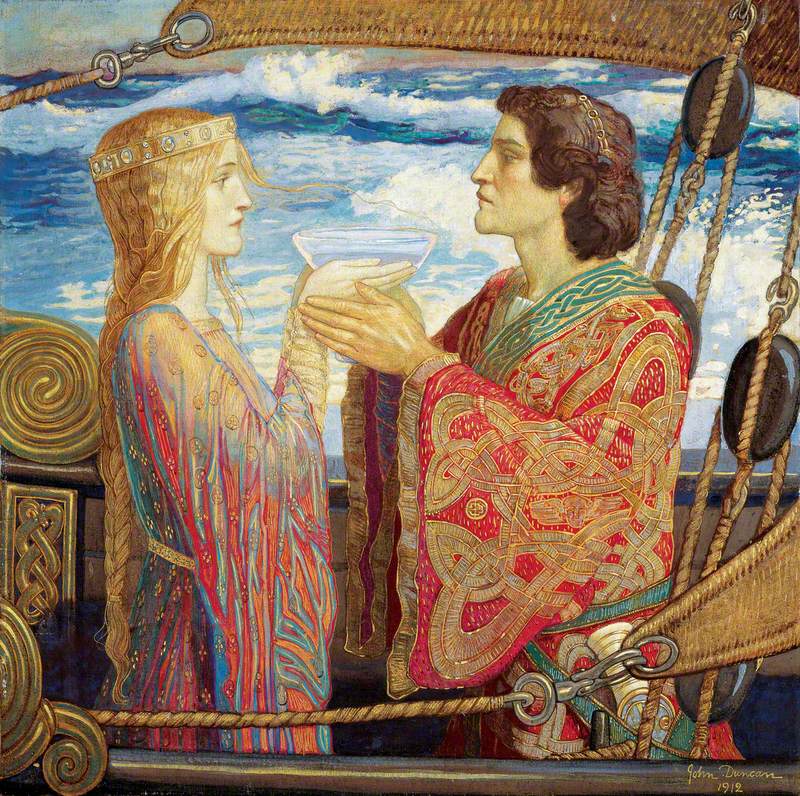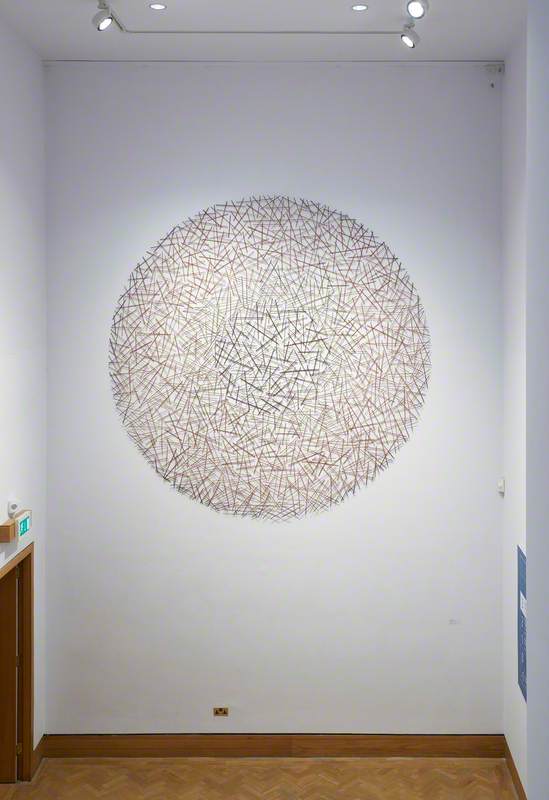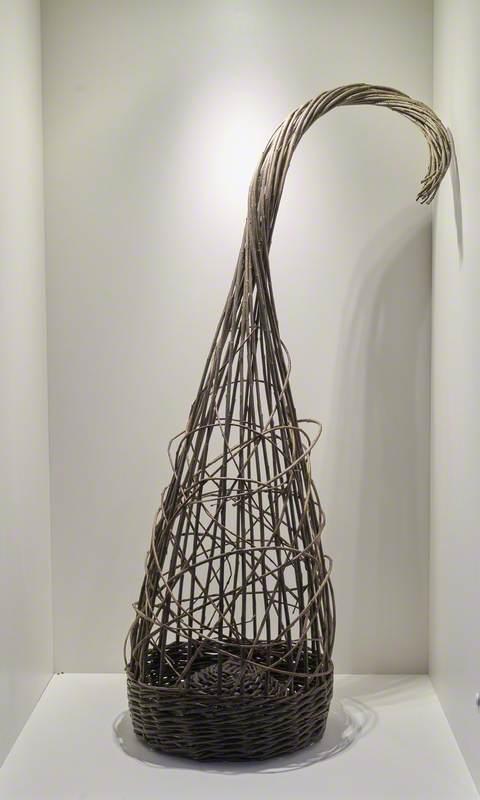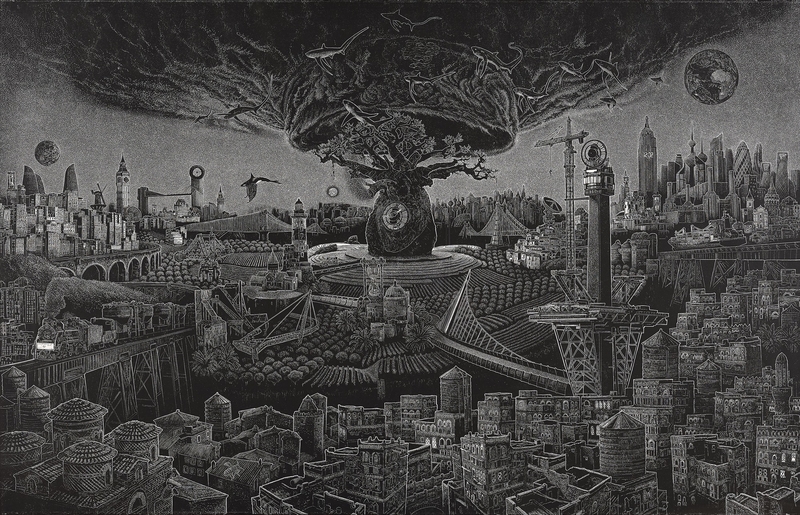The City Art Centre is a nine-storey former warehouse located in the heart of Edinburgh. It is one of eleven venues managed by Museums & Galleries Edinburgh, part of the City of Edinburgh Council.
The City Art Centre aims to champion historic and contemporary Scottish visual and applied arts. It is home to the city’s nationally recognised collection of Scottish art, and stages an extensive programme of temporary exhibitions every year.
Art Unlocked is an online talk series by Art UK in collaboration with Bloomberg Philanthropies. This Curation is based on a talk by Dr Helen Scott, Curator of Fine Art at the City Art Centre, on 20th April, 2022. You can find a recording at: https://youtu.be/_nbF9kMWXtM
-
The Entry of George IV into Edinburgh from the Calton Hill, 1822 1827
When King George IV travelled to Edinburgh in August 1822, it was the first time in almost 200 years that a reigning British monarch had visited Scotland. The novelist Sir Walter Scott was tasked with orchestrating the content of the trip, which included a series of ceremonial processions, formal dinners, balls and military reviews.
Contemporary artists flocked to Edinburgh to document the occasion. John Wilson Ewbank, who was based in the city at the time, painted this monumental canvas, which he exhibited at the Royal Scottish Academy in 1827.
The scene shows the royal procession making its way towards Holyrood Palace. Spectators are packed into every available vantage point, crowding the rooftops to get a glimpse of the King.
John Wilson Ewbank (c.1799–1847)
Oil on canvas
H 150.5 x W 240 cm
Museums & Galleries Edinburgh – City of Edinburgh Council
-
Les joueurs c.1907
During the late 19th century, women artists in Scotland faced many obstacles in pursuing professional careers. Mary Cameron worked against this backdrop, subverting gender-based stereotypes to achieve national and international acclaim.
Much of Cameron’s mature work was informed by her travels in Spain. Having first visited to study the work of Velázquez, she quickly immersed herself in Spanish life, establishing studios in Madrid and Seville. She painted large-scale canvases based on her experiences, including scenes of violent bullfights and traditional celebrations.
Les joueurs depicts three men playing cards in a rural setting. The painting had its exhibition debut in Paris, and featured in Cameron’s first solo exhibition in 1908.
Mary Cameron (1864–1921)
Oil on canvas
H 121.9 x W 163.8 cm
Museums & Galleries Edinburgh – City of Edinburgh Council
-
Tristan and Isolde 1912
The Dundee-born artist John Duncan was a key figure in the Celtic Revival movement in Scotland. Drawing inspiration from Celtic history, folklore and song, he created wall murals, book illustrations and easel paintings that aligned with the ideals of the movement.
Many of his works portray mythological subjects; this one presents a scene from the legend of Tristan and Isolde. The main characters are shown drinking a love potion that will bind them together forever.
Duncan was interested in traditional Celtic design. Here, he incorporates a range of detailed knotwork and scroll patterns into the painting, some of which may derive from authentic sources. The decorative quality of the picture is further enhanced by the rich colour palette.
John Duncan (1866–1945)
Tempera on canvas
H 76.6 x W 76.6 cm
Museums & Galleries Edinburgh – City of Edinburgh Council
-
Aerie 2010
Aerie is a site-specific artwork that was commissioned from Farey in 2010 to coincide with her solo exhibition 'Spirit of Air'.
The sculpture, which measures over three metres in diameter, is constructed from hundreds of stems of natural willow. Positioned high above gallery visitors, it appears to hang as if magically suspended in space.
Based in Galloway, Farey specialises in making sculptural forms and vessels using willow, ash, birch and other locally sourced woods. For this work, she was inspired by imagery and ideas associated with birds’ nests, particularly those built by birds of prey. The artist wanted to create the sense of a refuge, a structure that would bring the calmness of nature into the city centre environment.
Lizzie Farey (b.1962)
Willow
H 320 x W 320 x D 3 cm
Museums & Galleries Edinburgh – City of Edinburgh Council
-
Twenty Sixteen 2016
Ade Adesina was born in Nigeria, and studied at Gray’s School of Art in Aberdeen between 2008 and 2012. Since then, he has rapidly emerged as one of Scotland’s most original printmakers. He produces highly detailed etchings, linocuts and woodcuts, often working on an unusually large scale.
His subject-matter is drawn from a range of sources, including his African heritage, British culture, current events and landscapes encountered while travelling. Different narrative and symbolic elements are combined to create surreal, otherworldly vistas.
Many of Adesina’s works relate to environmental issues and the impact of human activity on the natural environment. The unsettling juxtapositions in Twenty Sixteen evoke this topical theme.
Ade Adesina (b.1980)
Woodcut on paper
H 92 x W 61 cm
Museums & Galleries Edinburgh – City of Edinburgh Council







